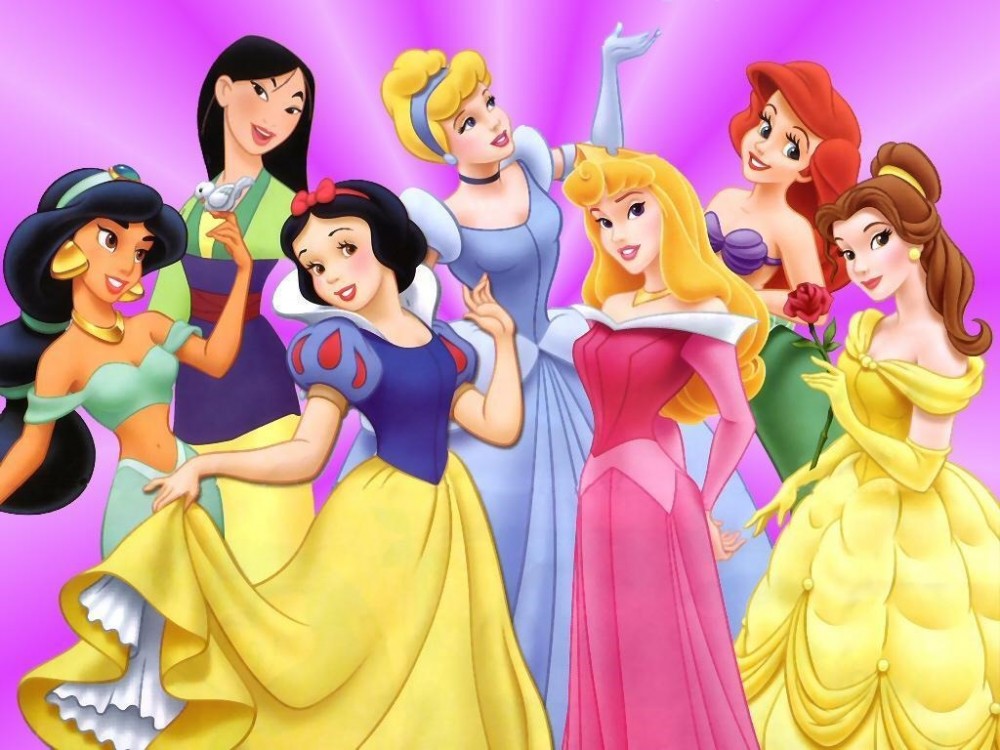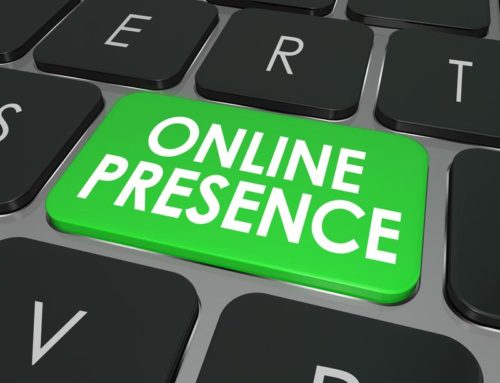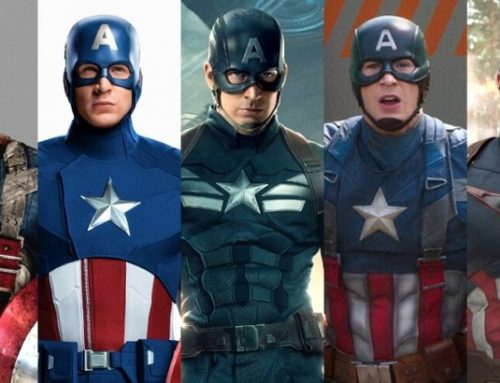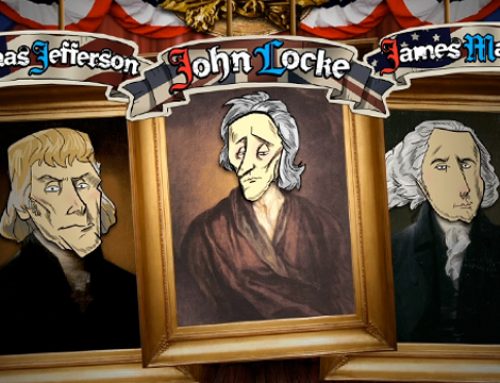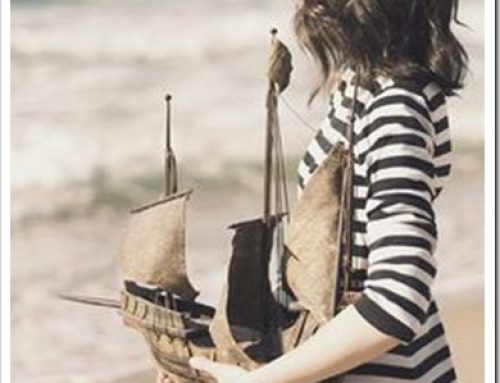By Samantha Jervey*
When Walt Disney decided to personally license the image of Mickey Mouse in 1929, he had no idea that he would start a licensing revolution.[1]
 This deliberate act made by Walt is what ultimately laid the foundation for his company, thus bringing to life what is now known today as Disney Consumer Products. Disney Consumer Products is one of many business divisions that belong to The Walt Disney Company.[2] In essence, they are in the business of “deliver[ing] innovative and engaging product experiences across thousands of categories from toys and apparel to books and fine art.”[3] That being so, character licensing plays a huge role in Disney’s business dealings, which thanks to Kay Kamen, is an area that the company is well versed in. Kay Kamen joined the Disney team in 1932 when he was appointed to take charge of Disney Licensing.[4] It was then that he set the standard for character licensing within the entertainment industry thereby making it possible for Disney to grow into the world’s largest licensor today.[5] Out of their vast set of properties, Disney owes much of their licensing success to the Disney Princess brand. The brand is a promising niche to marketers, in addition to having mass appeal to consumers, making it an attractive product to licensees all around. Furthermore, analytical licensing charts and merchandise sales trends suggest that the Disney Princess brand will forever be timeless in the eyes of little girls and women alike.
This deliberate act made by Walt is what ultimately laid the foundation for his company, thus bringing to life what is now known today as Disney Consumer Products. Disney Consumer Products is one of many business divisions that belong to The Walt Disney Company.[2] In essence, they are in the business of “deliver[ing] innovative and engaging product experiences across thousands of categories from toys and apparel to books and fine art.”[3] That being so, character licensing plays a huge role in Disney’s business dealings, which thanks to Kay Kamen, is an area that the company is well versed in. Kay Kamen joined the Disney team in 1932 when he was appointed to take charge of Disney Licensing.[4] It was then that he set the standard for character licensing within the entertainment industry thereby making it possible for Disney to grow into the world’s largest licensor today.[5] Out of their vast set of properties, Disney owes much of their licensing success to the Disney Princess brand. The brand is a promising niche to marketers, in addition to having mass appeal to consumers, making it an attractive product to licensees all around. Furthermore, analytical licensing charts and merchandise sales trends suggest that the Disney Princess brand will forever be timeless in the eyes of little girls and women alike.
As a large company with such a wide range of licensable properties, Disney is responsible for keeping track of their character database in an orderly and functional fashion. They have done so by dividing their licensing unit into five
 strategic brand priorities, one of which is Disney Princess and Disney Fairies. The Disney Princess brand first appeared as a cohesive collection under Andy Mooney when he was appointed as chairman of DCP in 2000.[6] In its entirety, the Disney Princess royal court accounts for 11 princess characters that embody a rich legacy and a unique set of inner qualities and values.[7] The elite group includes Ariel, Aurora, Belle, Cinderella, Jasmine, Merida, Mulan, Pocahontas, Rapunzel, Snow White and Tiana, each of whom serves as a role model to young women across the globe.[8] Families today love the traits that these women inspire among their daughters, “such as being spirited, graceful, smart, kind, compassionate, courageous, heroic, adventurous, passionate, confident, and brave.”[9] That being said, the brand is clearly marketed towards a target age group, although it has grown into something bigger than itself. Mary Beech, vice president and general manager of Global Studio Franchise Development, states how Disney is “hitting a key developmental pattern for little girls, ages 2 to 5.”[10] They are doing so through intricate storytelling and top-level character appeal, which in return, is stealing the hearts of little girls.[11] Furthermore, Disney’s understanding of who they are as a brand, along with marketing strategy, has helped to lay a foundation for their licensing success.
strategic brand priorities, one of which is Disney Princess and Disney Fairies. The Disney Princess brand first appeared as a cohesive collection under Andy Mooney when he was appointed as chairman of DCP in 2000.[6] In its entirety, the Disney Princess royal court accounts for 11 princess characters that embody a rich legacy and a unique set of inner qualities and values.[7] The elite group includes Ariel, Aurora, Belle, Cinderella, Jasmine, Merida, Mulan, Pocahontas, Rapunzel, Snow White and Tiana, each of whom serves as a role model to young women across the globe.[8] Families today love the traits that these women inspire among their daughters, “such as being spirited, graceful, smart, kind, compassionate, courageous, heroic, adventurous, passionate, confident, and brave.”[9] That being said, the brand is clearly marketed towards a target age group, although it has grown into something bigger than itself. Mary Beech, vice president and general manager of Global Studio Franchise Development, states how Disney is “hitting a key developmental pattern for little girls, ages 2 to 5.”[10] They are doing so through intricate storytelling and top-level character appeal, which in return, is stealing the hearts of little girls.[11] Furthermore, Disney’s understanding of who they are as a brand, along with marketing strategy, has helped to lay a foundation for their licensing success.
Seeing how the brand did not premiere as a cohesive collection until 2000, it did not take long for Disney Princess to conquer the licensing industry. Disney consistently ranks as Number 1 on most lists of global licensing, consistently generating worldwide revenues in the high 26-29 billion dollar range. As a reaffirmation of how well the company had been doing, in 2012, The Licensing Letter released their second annual list of “best-selling licensed entertainment merchandise” based on 2011 retail sales in North America.[12] The list accounted for many classic brands, including Star Wars and Sesame Street, with Disney Princess charting strong at number one.[13] In North American retail sales, the Princess brand made $1.6 billion, while reaching an
 impressive $3 billion in global sales.[14] These numbers were based on the sales of physical consumer goods alone and included “t-shirts, stationary, toys and electronics.”[15] Furthermore, it is important to note that this list did not take into account merchandise manufactured by the property owner, but solely licensed products “that outside manufacturers pay an average royalty of 8.7% of the wholesale cost to produce.”[16] Finally, the numbers also exclude licensing revenue from other powerful Disney brands such as Pooh ($1.09 Billion), Cars ($1.05 Billion), Toy Story ($685 Million), Disney Fairies ($435 Million), nor Disney’s subsidiary, Marvel Comics, which is reported separately and generally garners around 5 billion in worldwide sales, all of which also consistently rank in the top ten.
impressive $3 billion in global sales.[14] These numbers were based on the sales of physical consumer goods alone and included “t-shirts, stationary, toys and electronics.”[15] Furthermore, it is important to note that this list did not take into account merchandise manufactured by the property owner, but solely licensed products “that outside manufacturers pay an average royalty of 8.7% of the wholesale cost to produce.”[16] Finally, the numbers also exclude licensing revenue from other powerful Disney brands such as Pooh ($1.09 Billion), Cars ($1.05 Billion), Toy Story ($685 Million), Disney Fairies ($435 Million), nor Disney’s subsidiary, Marvel Comics, which is reported separately and generally garners around 5 billion in worldwide sales, all of which also consistently rank in the top ten.
Disney’s success in licensing relies heavily on the demand of consumers, which is so great that manufacturers have no choice but to license their products in order to create supply. Ira Mayer, publisher and executive editor of the Licensing Letter, believes the reason that the Disney Princess is in such demand is that “there are surprisingly few girl properties like it [sic].”[17] In fact, product licensing is a fraction of Disney’s overall revenue, but that profit is due to its strong brand loyalty.[18] Because Disney’s properties, specifically those licensed by Disney Princess, are in such high demand, the company can afford to license its characters at “an above-average royalty of 15% or higher.”[19] This gives Disney Princess a rare advantage in the entertainment industry due to unrivaled product demand.
In addition to having high consumer value, the Disney Princess brand is more successful than most due to its adaptability in the market place. In truth, Disney Princess could probably license their properties in any market and still be successful, although the biggest licensing opportunities currently lie in the field of merchandise. Out of their assortment of licensed products, the brand encompasses, though is not limited to “toys, apparel, accessories, home décor,  consumer electronics, school supplies, and personal care.”[20] In addition to those lucrative products, they have found a niche within the wedding industry, such as with licensee Kirstie Kelly, who recently created a bridal collection inspired by the Disney Princess brand.[21] In fact, the company derives most of its product ideas from three core categories: dolls, role play, and books.[22] In Beech’s opinion, these three things are what have inspired growth into new markets, such as “live events and products for adults.”[23] Having this type of awareness and understanding of what consumers want has definitely helped Disney Princess stand out among their peers. They know exactly who their buyers are, along with what they are looking for in a product, and that is “style, sparkle and storytelling.”[24] In short, Disney Princess is not limited by age or expectation in the licensing world.
consumer electronics, school supplies, and personal care.”[20] In addition to those lucrative products, they have found a niche within the wedding industry, such as with licensee Kirstie Kelly, who recently created a bridal collection inspired by the Disney Princess brand.[21] In fact, the company derives most of its product ideas from three core categories: dolls, role play, and books.[22] In Beech’s opinion, these three things are what have inspired growth into new markets, such as “live events and products for adults.”[23] Having this type of awareness and understanding of what consumers want has definitely helped Disney Princess stand out among their peers. They know exactly who their buyers are, along with what they are looking for in a product, and that is “style, sparkle and storytelling.”[24] In short, Disney Princess is not limited by age or expectation in the licensing world.
It is important to note that when you are a company as big as Disney, it is vital that you keep a watchful eye on the use of your properties to ensure their reputation. This is a lesson Disney learned the hard way in 2010 when they went to court to file a copyright and trademark infringement claim. In Disney Enterprises, Inc. v. Away Discount, Disney caught their Defendant in the act of making and selling unlicensed merchandise.[25] Though the relevant facts in the instant case were brief, the Plaintiff, Disney, did indeed “own the exclusive rights to a number of trademarks and copyrights” that the Defendants were found violating.[26] The properties that were infringed included Disney’s Disney Princess, Winnie the Pooh, as well as a number of other big licensing names for Disney.[27] What this illustrates is that Disney keeps a watchful eye on suspicious behavior involving their copyrights and trademarks. As one of the biggest licensors in the world, it is a necessity to do so. While recovering monies lost is always important, it more important to maintain the reputable brand name of your characters, which is something that Disney is avidly passionate about. After all, it would be a shame for an infringer to forfeit the magic and persona of the Disney Princess brand that many girls have grown to love worldwide.
In conclusion, Disney’s Disney Princess brand is well deserving of the title as the entertainment industry’s top merchandise licensor. They have poured much time and energy into establishing themselves as a reputable name and it is crazy to think that it all started with Walt licensing the image of Mickey Mouse himself. Since Andy Mooney’s decision to group the ladies under a brand umbrella, Disney Princess has reached success far beyond anyone’s imagination. There are no limits when it comes to licensing opportunities with these girls, which is what makes them such a rare and hot commodity. With every t-shirt, bedspread, doll, or wedding dress, Disney Princess leaves a magical imprint on the hearts of their consumers. That being so, come 10 to 20 years from now, the beautiful stories and lessons left behind by these princesses will live on far beyond their inception.

*Samantha Jervey is a student at Belmont University majoring in Entertainment Industry Studies with a minor in dance. This article was written as an assignment in Mr. Shrum’s Entertainment Law & Licensing class. Her passions include music, writing, learning, and helping others. Having attended high school at Governor’s School for the Arts in Norfolk, Virginia, Samantha is dedicated to promoting the value of arts in education. She spends most of her time in the Nashville community looking for new ways to support and grow her knowledge of the entertainment industry.
[1] Disney Consumer Products, “About Us.” Accessed March 14, 2014. https://www.disneyconsumerproducts.com/Home/display.jsp?contentId=dcp_home_ourbusinesses_company_overview_us
[2] Ibid.
[3] Ibid.
[4] Ibid.
[5] Ibid.
[6] Disney Princess Power. (2009). License! Global, 12(4), 40.
[7] Disney Consumer Products, “About Us.” Accessed March 14, 2014. https://www.disneyconsumerproducts.com/Home/display.jsp?contentId=dcp_home_ourbusinesses_company_overview_us
[8] Ibid.
[9] Ibid.
[10] Disney Princess Power. (2009). License! Global, 12(4), 40.
[11] Ibid.
[12] Jenna Goudreau, Forbes, last modified September 17, 2012, http://www.forbes.com.
[13] Jenna Goudreau, Forbes, last modified September 17, 2012, http://www.forbes.com.
[14] Ibid.
[15] Ibid.
[16] Ibid.
[17] Ibid.
[18] Ibid.
[19] Ibid.
[20] Disney Princess Power. (2009). License! Global, 12(4), 40.
[21] Disney Princess Power. (2009). License! Global, 12(4), 40.
[22] Ibid.
[23] Ibid.
[24] Ibid.
[25] 2010 U.S. Dist. LEXIS 86119. LexisNexis Academic. Web. Date Accessed: 2014/03/23.
[26] Ibid.
[27] Ibid.
[1]
 This deliberate act made by Walt is what ultimately laid the foundation for his company, thus bringing to life what is now known today as Disney Consumer Products. Disney Consumer Products is one of many business divisions that belong to The Walt Disney Company.[2] In essence, they are in the business of “deliver[ing] innovative and engaging product experiences across thousands of categories from toys and apparel to books and fine art.”[3] That being so, character licensing plays a huge role in Disney’s business dealings, which thanks to Kay Kamen, is an area that the company is well versed in. Kay Kamen joined the Disney team in 1932 when he was appointed to take charge of Disney Licensing.[4] It was then that he set the standard for character licensing within the entertainment industry thereby making it possible for Disney to grow into the world’s largest licensor today.[5] Out of their vast set of properties, Disney owes much of their licensing success to the Disney Princess brand. The brand is a promising niche to marketers, in addition to having mass appeal to consumers, making it an attractive product to licensees all around. Furthermore, analytical licensing charts and merchandise sales trends suggest that the Disney Princess brand will forever be timeless in the eyes of little girls and women alike.
This deliberate act made by Walt is what ultimately laid the foundation for his company, thus bringing to life what is now known today as Disney Consumer Products. Disney Consumer Products is one of many business divisions that belong to The Walt Disney Company.[2] In essence, they are in the business of “deliver[ing] innovative and engaging product experiences across thousands of categories from toys and apparel to books and fine art.”[3] That being so, character licensing plays a huge role in Disney’s business dealings, which thanks to Kay Kamen, is an area that the company is well versed in. Kay Kamen joined the Disney team in 1932 when he was appointed to take charge of Disney Licensing.[4] It was then that he set the standard for character licensing within the entertainment industry thereby making it possible for Disney to grow into the world’s largest licensor today.[5] Out of their vast set of properties, Disney owes much of their licensing success to the Disney Princess brand. The brand is a promising niche to marketers, in addition to having mass appeal to consumers, making it an attractive product to licensees all around. Furthermore, analytical licensing charts and merchandise sales trends suggest that the Disney Princess brand will forever be timeless in the eyes of little girls and women alike.
As a large company with such a wide range of licensable properties, Disney is responsible for keeping track of their character database in an orderly and functional fashion. They have done so by dividing their licensing unit into five
Seeing how the brand did not premiere as a cohesive collection until 2000, it did not take long for Disney Princess to conquer the licensing industry. Disney consistently ranks as Number 1 on most lists of global licensing, consistently generating worldwide revenues in the high 26-29 billion dollar range. As a reaffirmation of how well the company had been doing, in 2012, The Licensing Letter released their second annual list of “best-selling licensed entertainment merchandise” based on 2011 retail sales in North America.[12] The list accounted for many classic brands, including Star Wars and Sesame Street, with Disney Princess charting strong at number one.[13] In North American retail sales, the Princess brand made $1.6 billion, while reaching an
In addition to having high consumer value, the Disney Princess brand is more successful than most due to its adaptability in the market place. In truth, Disney Princess could probably license their properties in any market and still be successful, although the biggest licensing opportunities currently lie in the field of merchandise. Out of their assortment of licensed products, the brand encompasses, though is not limited to “toys, apparel, accessories, home décor,
 This deliberate act made by Walt is what ultimately laid the foundation for his company, thus bringing to life what is now known today as Disney Consumer Products. Disney Consumer Products is one of many business divisions that belong to The Walt Disney Company.[2] In essence, they are in the business of “deliver[ing] innovative and engaging product experiences across thousands of categories from toys and apparel to books and fine art.”[3] That being so, character licensing plays a huge role in Disney’s business dealings, which thanks to Kay Kamen, is an area that the company is well versed in. Kay Kamen joined the Disney team in 1932 when he was appointed to take charge of Disney Licensing.[4] It was then that he set the standard for character licensing within the entertainment industry thereby making it possible for Disney to grow into the world’s largest licensor today.[5] Out of their vast set of properties, Disney owes much of their licensing success to the Disney Princess brand. The brand is a promising niche to marketers, in addition to having mass appeal to consumers, making it an attractive product to licensees all around. Furthermore, analytical licensing charts and merchandise sales trends suggest that the Disney Princess brand will forever be timeless in the eyes of little girls and women alike.
This deliberate act made by Walt is what ultimately laid the foundation for his company, thus bringing to life what is now known today as Disney Consumer Products. Disney Consumer Products is one of many business divisions that belong to The Walt Disney Company.[2] In essence, they are in the business of “deliver[ing] innovative and engaging product experiences across thousands of categories from toys and apparel to books and fine art.”[3] That being so, character licensing plays a huge role in Disney’s business dealings, which thanks to Kay Kamen, is an area that the company is well versed in. Kay Kamen joined the Disney team in 1932 when he was appointed to take charge of Disney Licensing.[4] It was then that he set the standard for character licensing within the entertainment industry thereby making it possible for Disney to grow into the world’s largest licensor today.[5] Out of their vast set of properties, Disney owes much of their licensing success to the Disney Princess brand. The brand is a promising niche to marketers, in addition to having mass appeal to consumers, making it an attractive product to licensees all around. Furthermore, analytical licensing charts and merchandise sales trends suggest that the Disney Princess brand will forever be timeless in the eyes of little girls and women alike.

